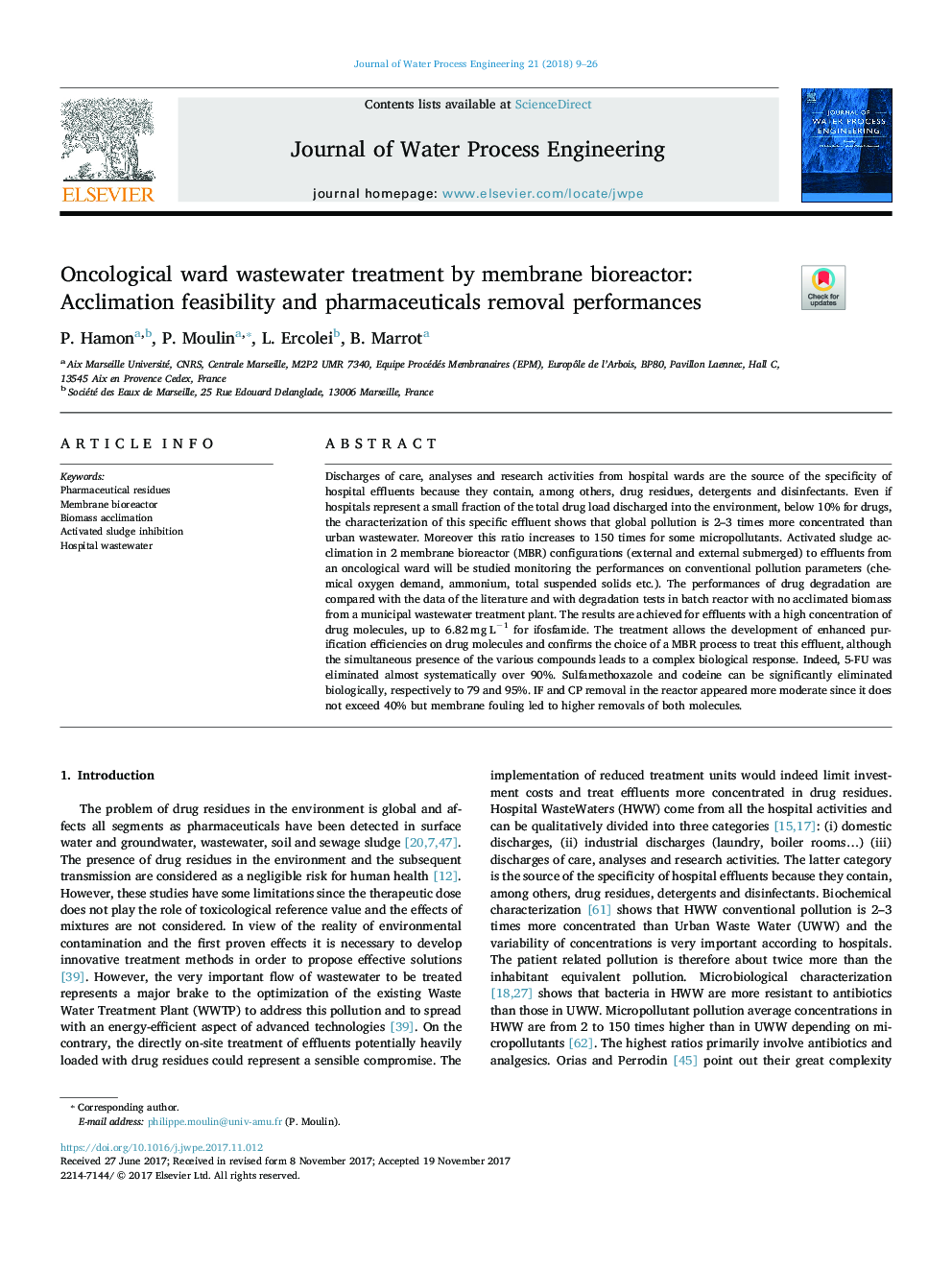| Article ID | Journal | Published Year | Pages | File Type |
|---|---|---|---|---|
| 6672016 | Journal of Water Process Engineering | 2018 | 18 Pages |
Abstract
Discharges of care, analyses and research activities from hospital wards are the source of the specificity of hospital effluents because they contain, among others, drug residues, detergents and disinfectants. Even if hospitals represent a small fraction of the total drug load discharged into the environment, below 10% for drugs, the characterization of this specific effluent shows that global pollution is 2-3 times more concentrated than urban wastewater. Moreover this ratio increases to 150 times for some micropollutants. Activated sludge acclimation in 2 membrane bioreactor (MBR) configurations (external and external submerged) to effluents from an oncological ward will be studied monitoring the performances on conventional pollution parameters (chemical oxygen demand, ammonium, total suspended solids etc.). The performances of drug degradation are compared with the data of the literature and with degradation tests in batch reactor with no acclimated biomass from a municipal wastewater treatment plant. The results are achieved for effluents with a high concentration of drug molecules, up to 6.82 mg Lâ1 for ifosfamide. The treatment allows the development of enhanced purification efficiencies on drug molecules and confirms the choice of a MBR process to treat this effluent, although the simultaneous presence of the various compounds leads to a complex biological response. Indeed, 5-FU was eliminated almost systematically over 90%. Sulfamethoxazole and codeine can be significantly eliminated biologically, respectively to 79 and 95%. IF and CP removal in the reactor appeared more moderate since it does not exceed 40% but membrane fouling led to higher removals of both molecules.
Related Topics
Physical Sciences and Engineering
Chemical Engineering
Chemical Engineering (General)
Authors
P. Hamon, P. Moulin, L. Ercolei, B. Marrot,
